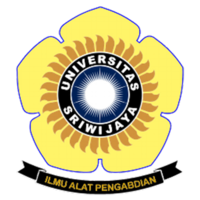Evaluasi Serangan Penyakit Bercak Daun dan Hama Oteng-Oteng pada Tanaman Labu Air yang diaplikasikan Tiga Racikan Biostimulan di Desa Sejaro Sakti, Kecamatan Indralaya, Kabupaten Ogan Ilir, Sumatera Selatan
Abstract
Akbario, R., Mardhotillah, F., Aprilliansyah, G., Ulandari, U., Suwandi, S., Muslim, A., Arsi, A., Gunawan, B., Irsan, C., & Pratama, R. (2023). Evaluation of pest and leaf spot disease attacks on water pumpkin crops applied with three biostimulant concoctions in Sejaro Sakti Village, Indralaya District, Ogan Ilir Regency, South Sumatra. In: Herlinda S et al. (Eds.), Prosiding Seminar Nasional Lahan Suboptimal ke-11 Tahun 2023, Palembang 21 Oktober 2023. (pp. 262–274). Palembang: Penerbit & Percetakan Universitas Sriwijaya (UNSRI).
Water gourd plants are plants that are in great demand and have their own advantages over other similar plants. This plant is very easy to cultivate because it has the ability to grow well in lowlands and highlands and is tolerant of temperatures below 10º C. The challenge in cultivating this plant becomes very complex due to pest and disease attacks. A disease of serious concern is leaf spot disease. This study aimed to test three kinds of biostimulant concoctions to overcome the problem of leaf spot disease in water gourd plants and their response to pest attacks. The observation method used in this research is the direct observation method in the field which is carried out by determining the land. After the land was determined, samples were taken randomly with 4 treatments as many as 10 replications. The four treatments were Beauveria bassiana in tannin (WB), seaweed extract (RL), seaweed extract+Beauveria bassiana in tannin (RL+Wb) and water control. Each treatment was replicated 10 times with a watering frequency of 1 x a week. Observations were made 5 times with a distance of 7 days between observations. The data collected were primary data in the form of direct observation of symptoms in the field and secondary data obtained from interviews with farmers. From the results of observations, it was found that the pathogen that causes leaf spot disease in water gourd plants comes from the fungi of the genus Curvularia. While pests known to attack water gourd plants are oteng-oteng (Aulacophora indica). The four treatments had a significant effect on pest and disease attacks, but the treatment using seaweed extract (RL) showed a significant reduction in attacks.
Keywords
Full Text:
PDFArticle Metrics
Abstract view : 545 timesPDF - 1306 times
Refbacks
- There are currently no refbacks.

